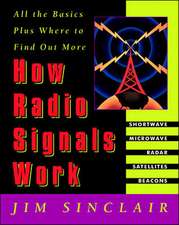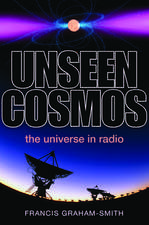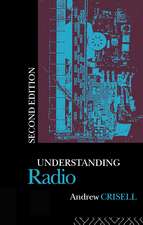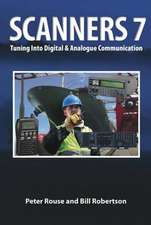A History of Wireless Telegraphy: Including Some Bare-Wire Proposals for Subaqueous Telegraphs: Cambridge Library Collection - Technology
Autor John Joseph Fahieen Limba Engleză Paperback – 18 mai 2011
Din seria Cambridge Library Collection - Technology
-
 Preț: 364.07 lei
Preț: 364.07 lei - 8%
 Preț: 537.73 lei
Preț: 537.73 lei -
 Preț: 465.21 lei
Preț: 465.21 lei -
 Preț: 366.74 lei
Preț: 366.74 lei -
 Preț: 203.24 lei
Preț: 203.24 lei -
 Preț: 524.46 lei
Preț: 524.46 lei -
 Preț: 367.33 lei
Preț: 367.33 lei -
 Preț: 369.83 lei
Preț: 369.83 lei -
 Preț: 370.82 lei
Preț: 370.82 lei -
 Preț: 466.14 lei
Preț: 466.14 lei -
 Preț: 352.55 lei
Preț: 352.55 lei -
 Preț: 520.21 lei
Preț: 520.21 lei -
 Preț: 420.82 lei
Preț: 420.82 lei -
 Preț: 474.72 lei
Preț: 474.72 lei -
 Preț: 330.37 lei
Preț: 330.37 lei -
 Preț: 368.87 lei
Preț: 368.87 lei -
 Preț: 464.84 lei
Preț: 464.84 lei -
 Preț: 252.30 lei
Preț: 252.30 lei -
 Preț: 237.42 lei
Preț: 237.42 lei -
 Preț: 331.14 lei
Preț: 331.14 lei -
 Preț: 422.55 lei
Preț: 422.55 lei -
 Preț: 366.19 lei
Preț: 366.19 lei -
 Preț: 329.98 lei
Preț: 329.98 lei -
 Preț: 265.36 lei
Preț: 265.36 lei - 19%
 Preț: 481.08 lei
Preț: 481.08 lei -
 Preț: 366.19 lei
Preț: 366.19 lei - 19%
 Preț: 476.71 lei
Preț: 476.71 lei -
 Preț: 318.26 lei
Preț: 318.26 lei -
 Preț: 241.27 lei
Preț: 241.27 lei -
 Preț: 366.19 lei
Preț: 366.19 lei -
 Preț: 368.10 lei
Preț: 368.10 lei - 19%
 Preț: 502.47 lei
Preț: 502.47 lei -
 Preț: 465.60 lei
Preț: 465.60 lei -
 Preț: 470.39 lei
Preț: 470.39 lei -
 Preț: 329.18 lei
Preț: 329.18 lei -
 Preț: 466.53 lei
Preț: 466.53 lei -
 Preț: 521.18 lei
Preț: 521.18 lei -
 Preț: 521.57 lei
Preț: 521.57 lei -
 Preț: 370.43 lei
Preț: 370.43 lei -
 Preț: 339.29 lei
Preț: 339.29 lei -
 Preț: 516.39 lei
Preț: 516.39 lei -
 Preț: 253.76 lei
Preț: 253.76 lei -
 Preț: 334.88 lei
Preț: 334.88 lei
Preț: 368.87 lei
Nou
Puncte Express: 553
Preț estimativ în valută:
70.59€ • 75.48$ • 58.85£
70.59€ • 75.48$ • 58.85£
Carte tipărită la comandă
Livrare economică 18 aprilie-02 mai
Preluare comenzi: 021 569.72.76
Specificații
ISBN-13: 9781108026864
ISBN-10: 1108026869
Pagini: 378
Ilustrații: 56 b/w illus.
Dimensiuni: 140 x 216 x 21 mm
Greutate: 0.48 kg
Editura: Cambridge University Press
Colecția Cambridge University Press
Seria Cambridge Library Collection - Technology
Locul publicării:Cambridge, United Kingdom
ISBN-10: 1108026869
Pagini: 378
Ilustrații: 56 b/w illus.
Dimensiuni: 140 x 216 x 21 mm
Greutate: 0.48 kg
Editura: Cambridge University Press
Colecția Cambridge University Press
Seria Cambridge Library Collection - Technology
Locul publicării:Cambridge, United Kingdom
Cuprins
Preface to second edition; Preface to first edition; First Period – the Possible: 1. Professor C. A. Steinheil, 1838; 2. Edward Davy, 1838; 3. Professor Morse, 1842; 4. James Bowman Lindsay, 1843; 5. J. W. Wilkins, 1845; 6. Dr. O'Shaughnessy, 1849; 7. E. and H. Highton, 1852–1872; 8. G. E. Dering, 1853; 9. John Haworth, 1862; 10. J. H. Mower, 1868; 11. M. Bourbouze, 1870; 12. Mahlon Loomis, 1872; Second Period – the Practicable: 1. Preliminary. Notice of the telephone in relation to wireless telegraphy; 2. Professor John Trowbridge, 1880; 3. Professor Graham Bell, 1882; 4. Professor A. E. Dolbear, 1882; 5. T. A. Edison, 1885; 6. W. F. Melhuish, 1890; 7. Charles A. Stevenson, 1892; 8. Professor Erich Rathenau, 1894; Third Period – the Practical: Systems in actual use; 1. Sir W. H. Preece's method; 2. Willoughby Smith's method; 3. G. Marconi's method; Appendix A. The relation between electricity and light, before and after Hertz; Appendix B. Prof. Henry on high tension electricity being confined to the surface of conducting bodies, with special reference to the proper construction of lightning-rods. On modern views with respect to the nature of electric currents; Appendix C. Variations of conductivity under electrical influence; Appendix D. Researches of Prof. D. E. Hughes, F. R. S., in electric waves and their application to wireless telegraphy, 1879–1886; Appendix E. Reprint of G. Marconi's patent; Index.
Descriere
In this 1901 book, the telegraph engineer John Joseph Fahie explained the newly invented and rapidly developing technology of radio.














